
2025 Winner
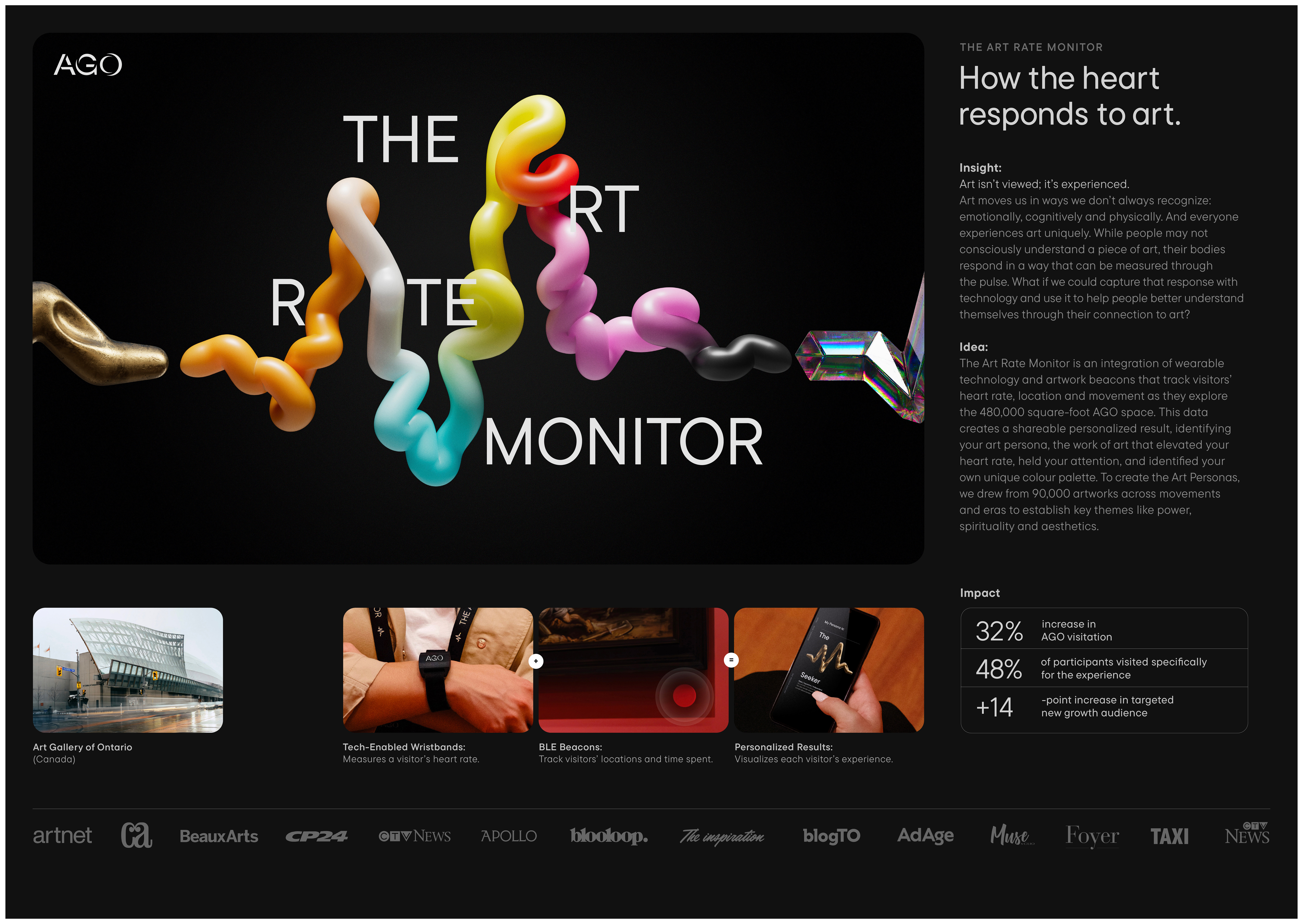
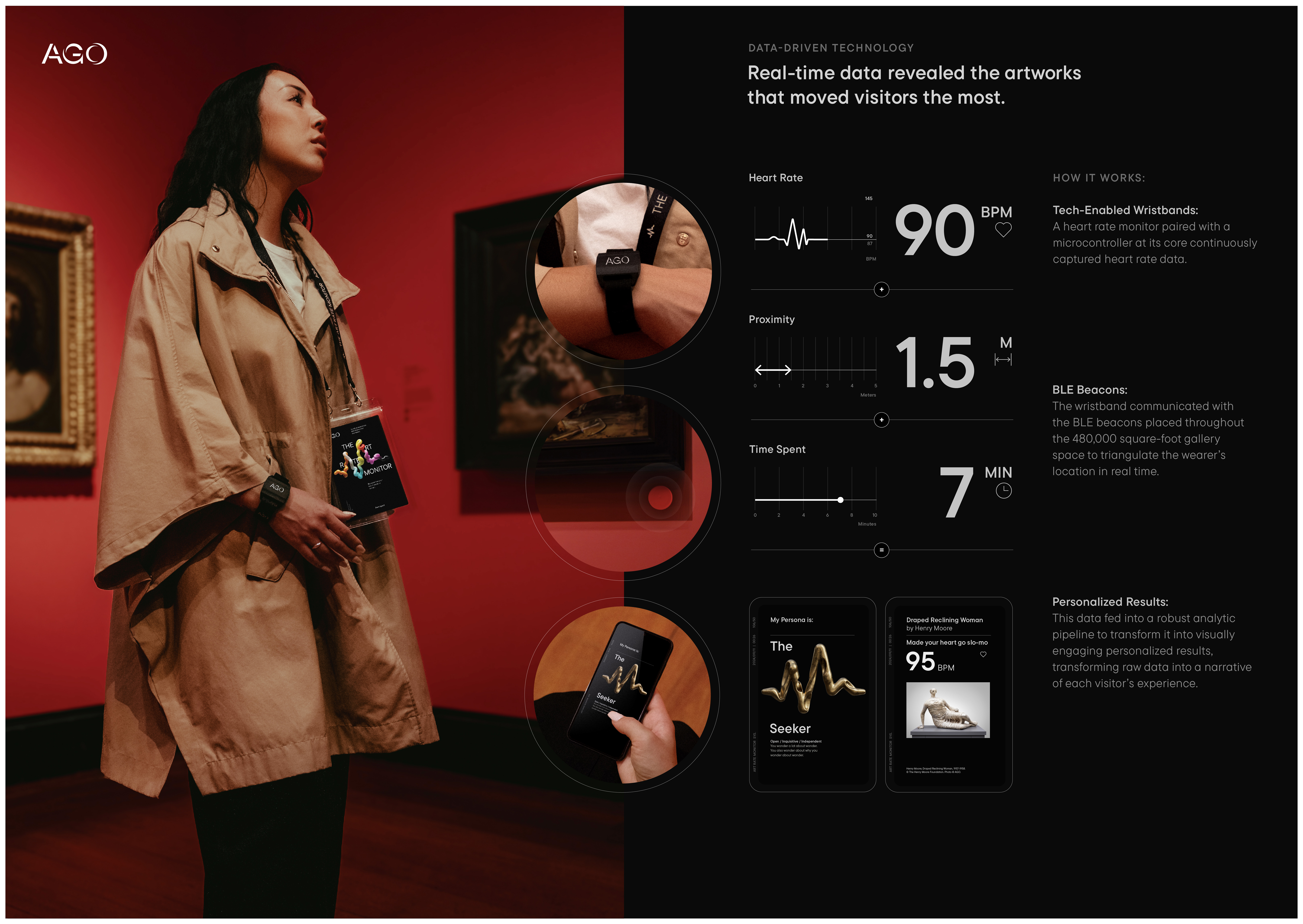
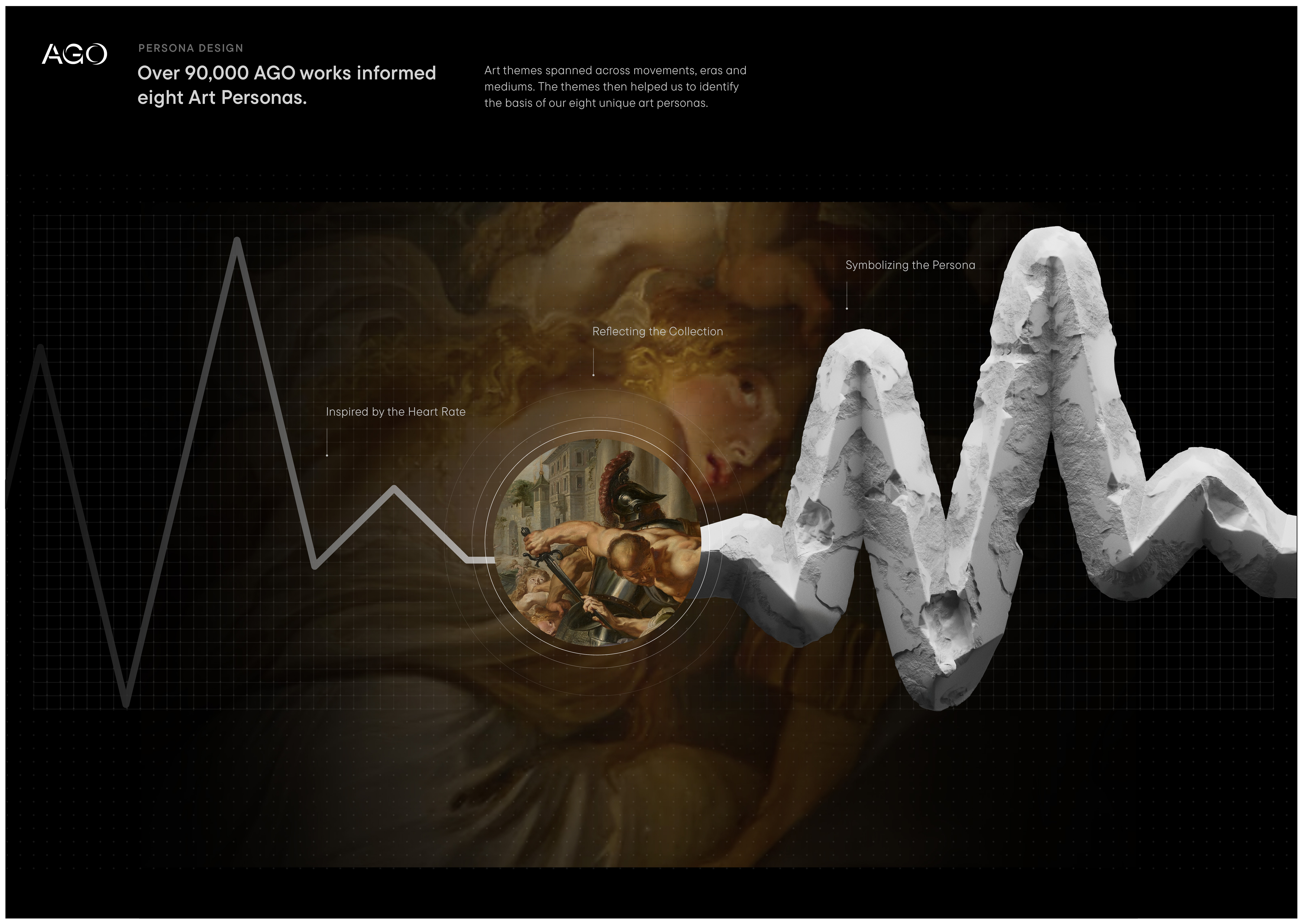
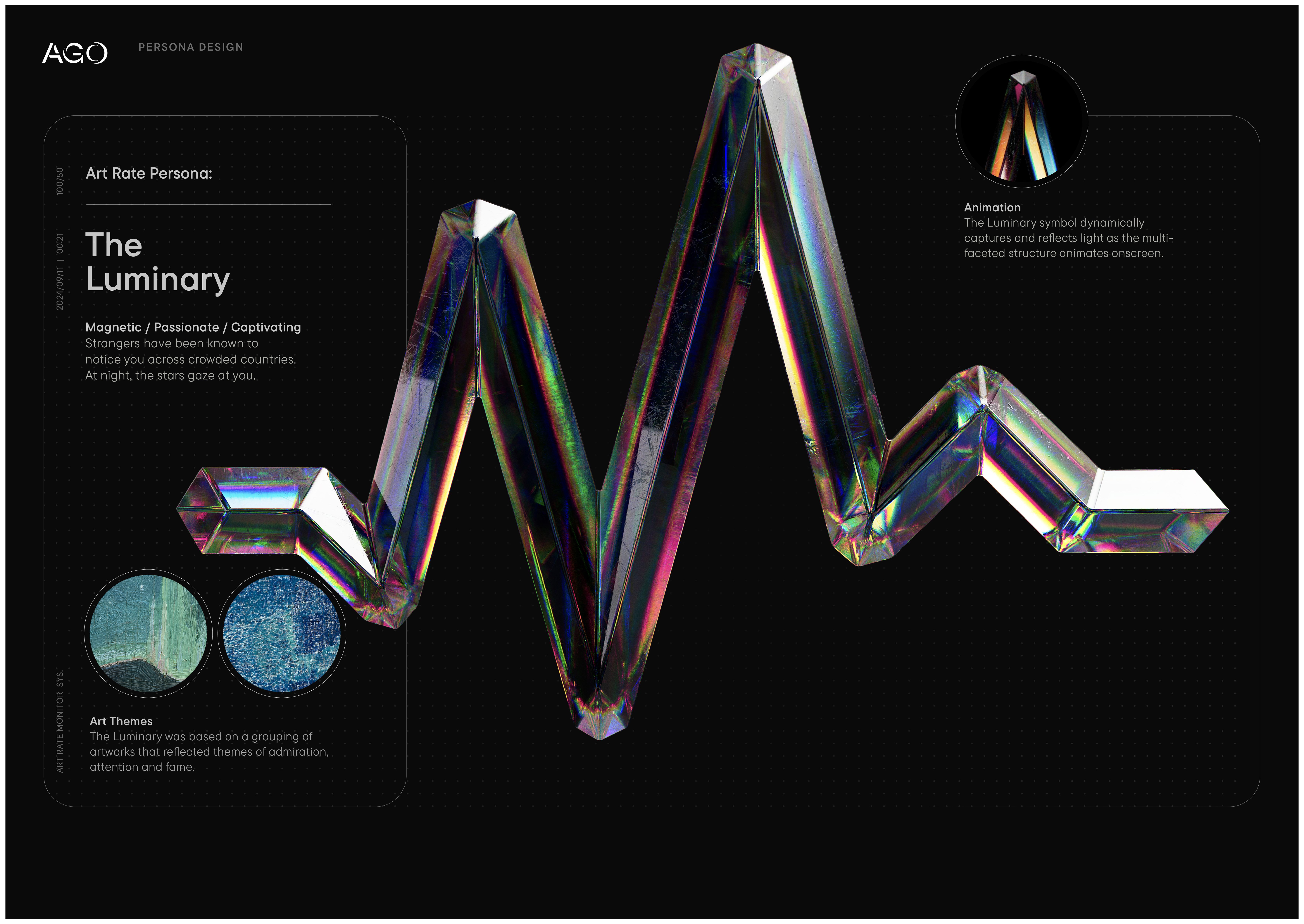
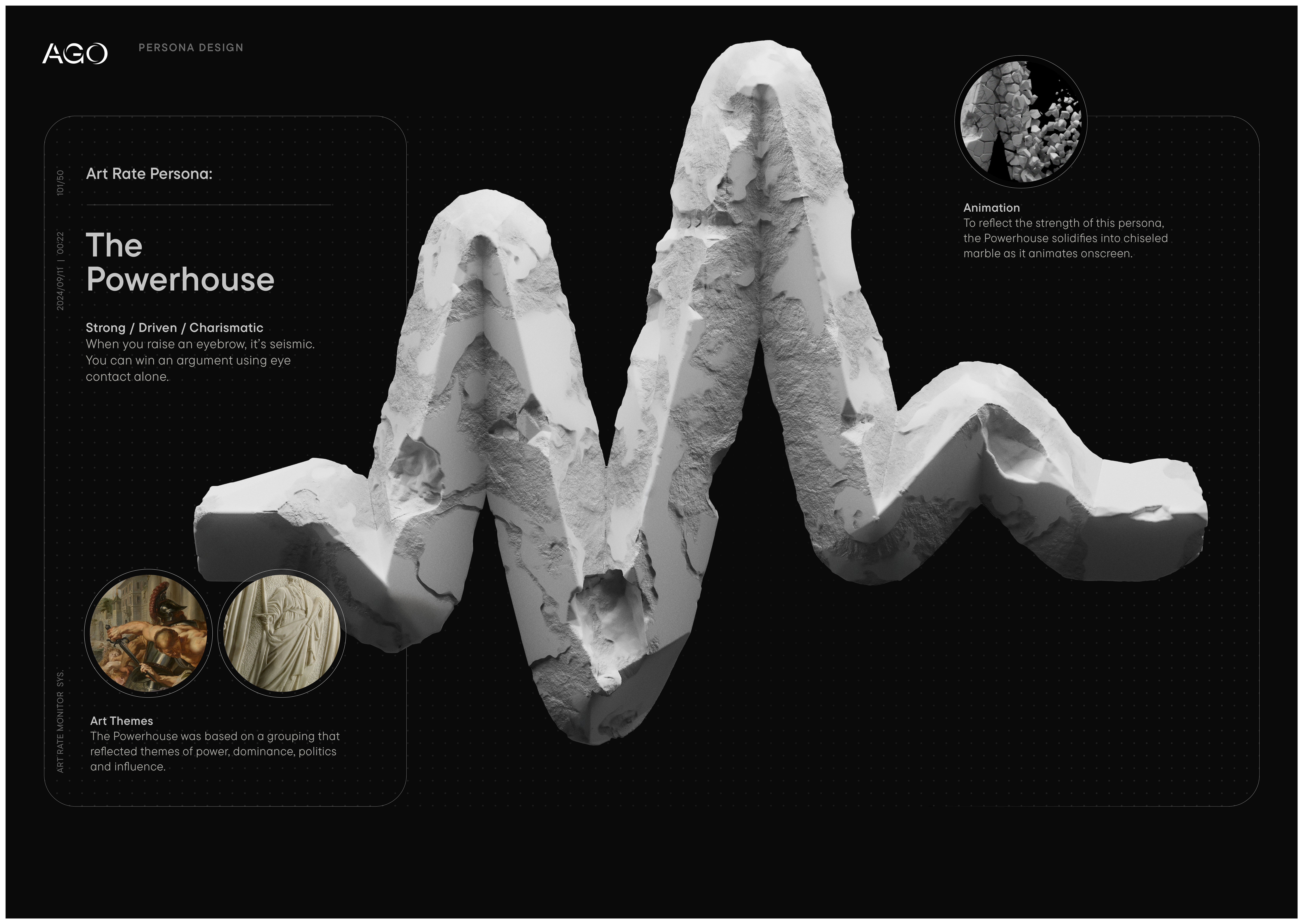

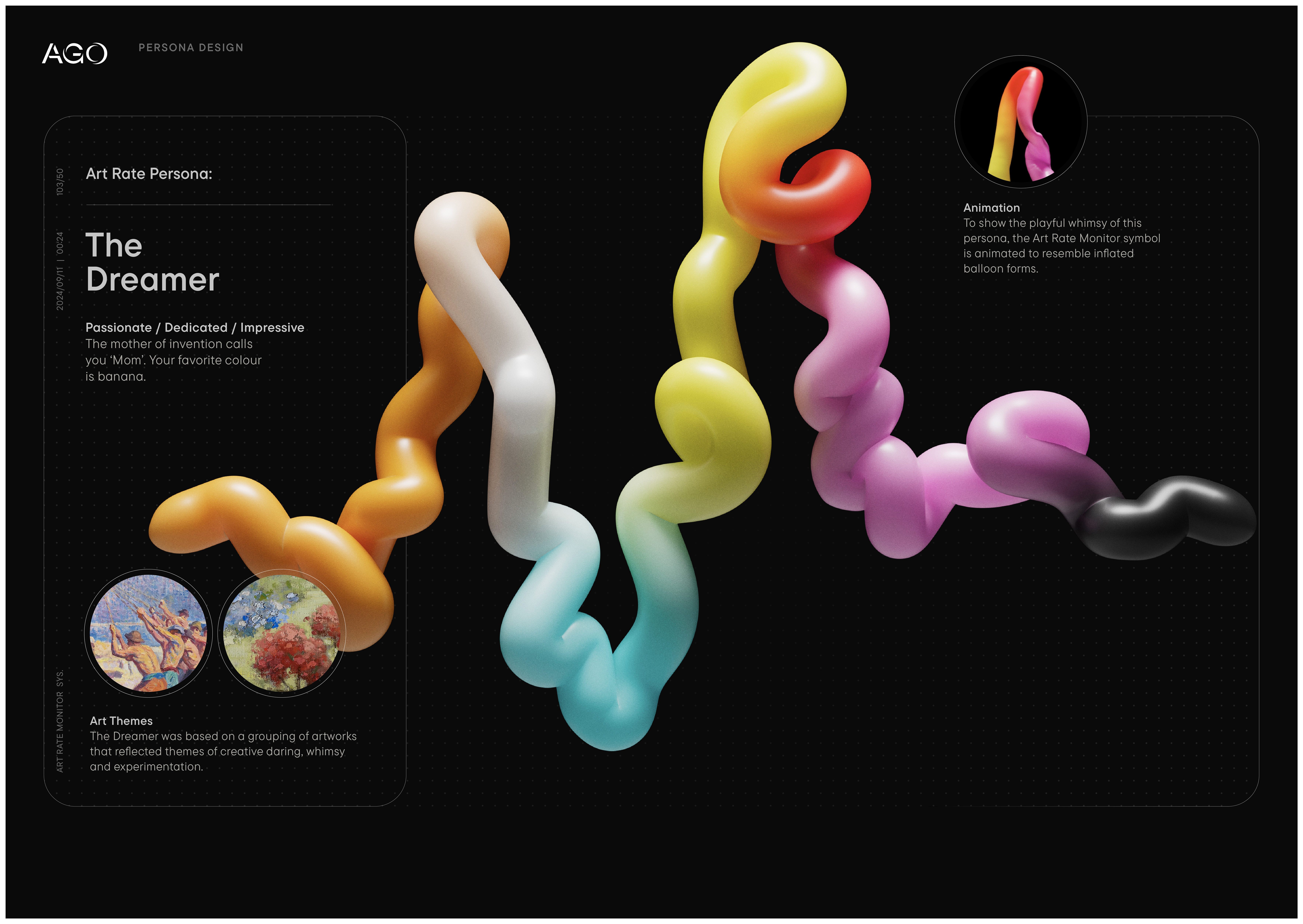
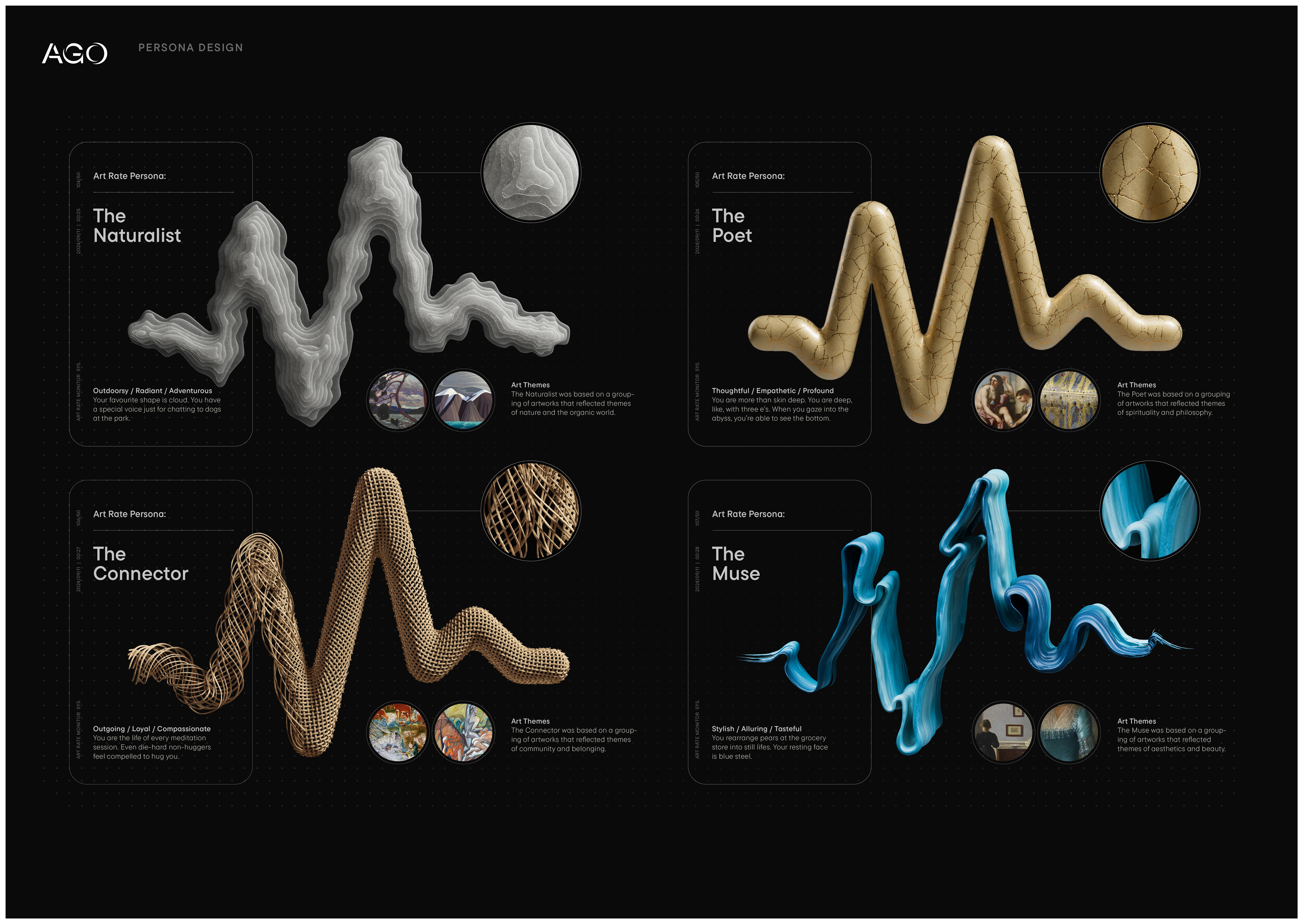
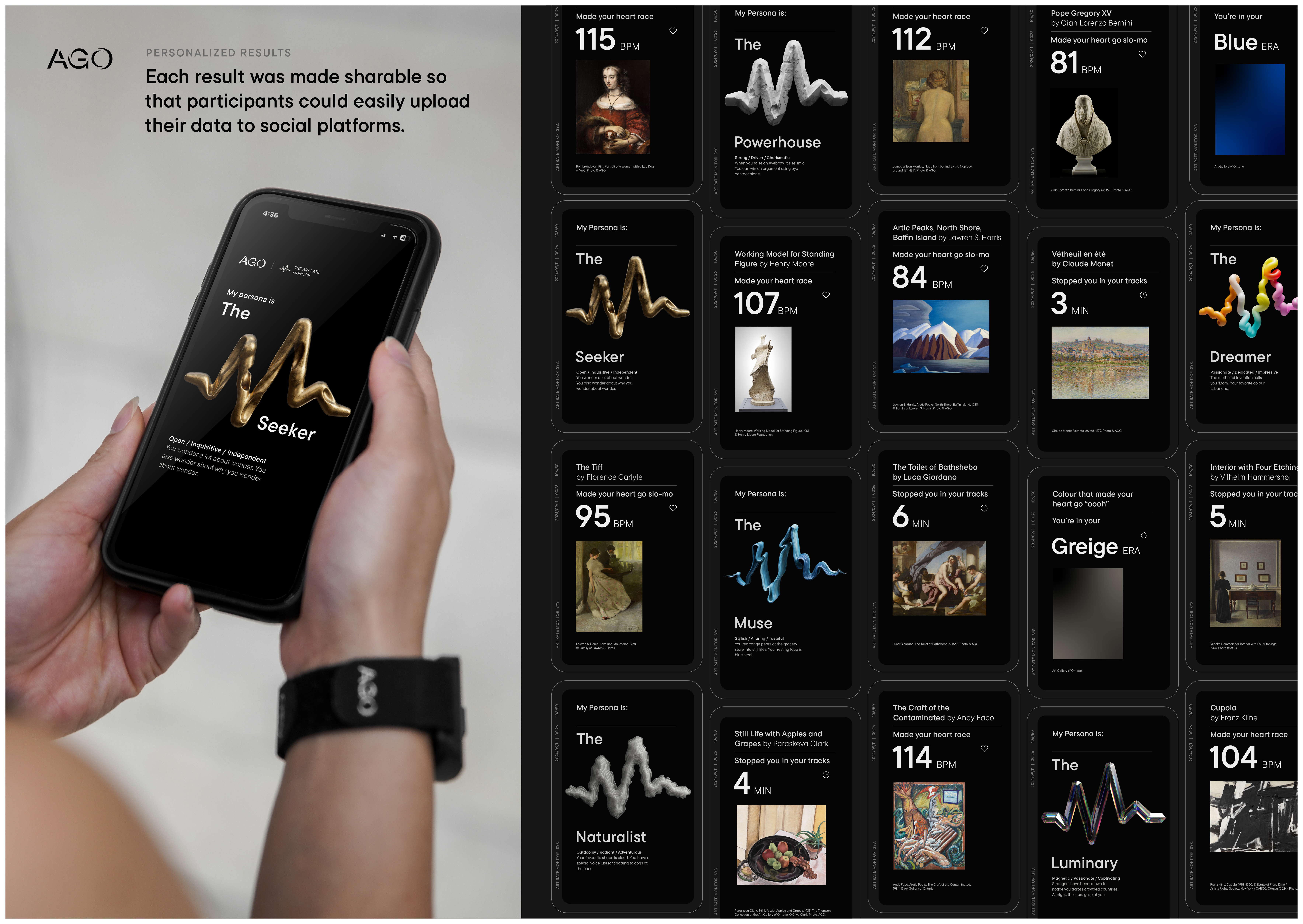
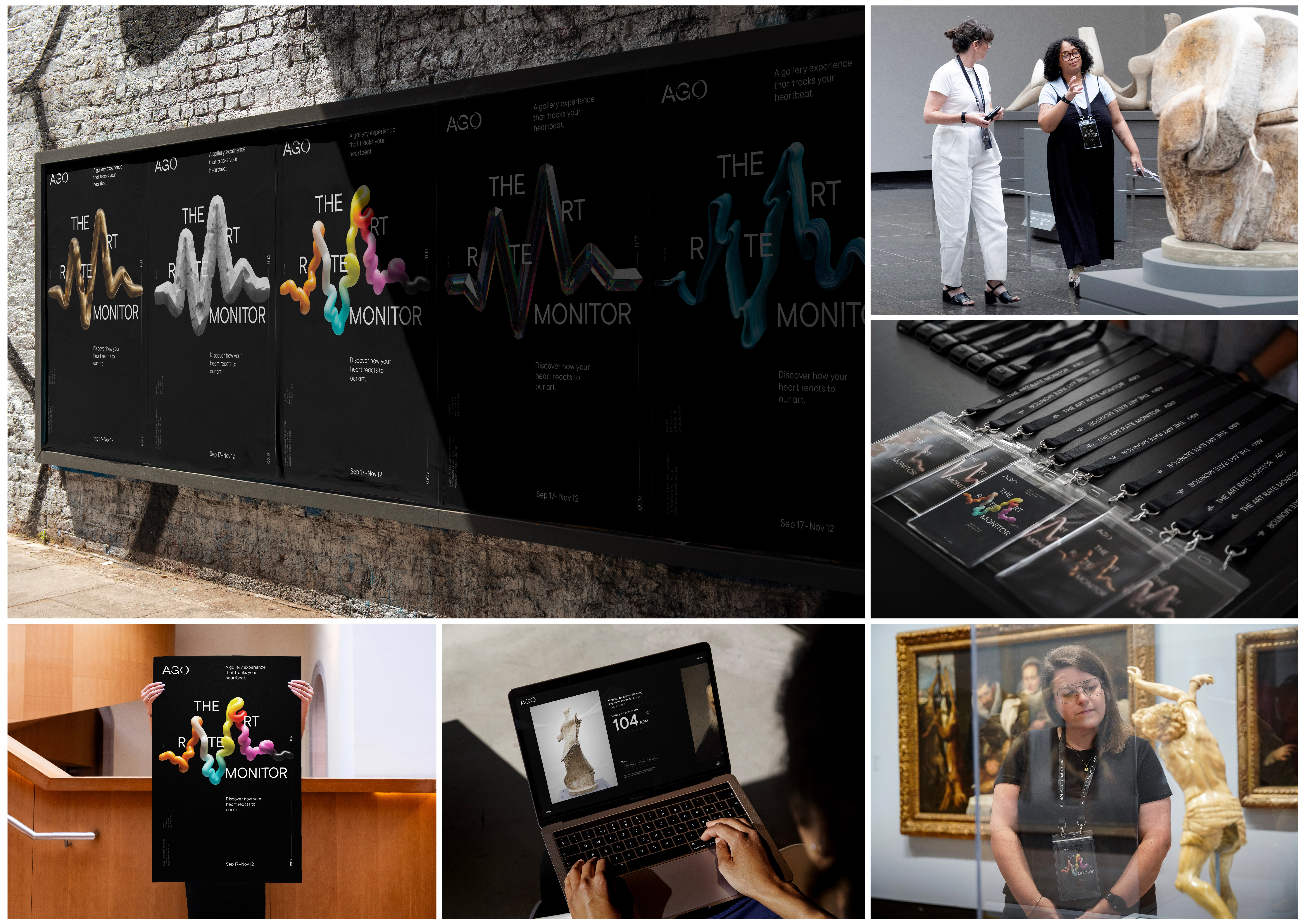
GoldData Driven Strategy
GoldTech Strategy
Art Gallery of Ontario (AGO)
"Art Rate Monitor"
Zulu Alpha Kilo
"Art Rate Monitor"
Zulu Alpha Kilo
CASE SUMMARY
From immersive pop-ups to concerts, festivals, and sports, high-energy events dominate out-of-home entertainment. In comparison, the Art Gallery of Ontario (AGO) faced a perception problem: Art museums were seen as passive, traditional, and even boring.To overcome post-COVID visitation declines and to secure a new generation of supporters, the AGO needed to reach out to a younger audience and make art feel relevant to people who aren’t “art people,” engaging them in a way that would drive loyalty and repeat visitation.
Art isn’t viewed; it’s experienced.
In a world that often feels lacking in meaning, younger generations create it through experiences. Live experiences help them build and express identity, challenge themselves, expand their perspectives, and feel connected to others, their communities, and the world. As a chronically online audience, they crave novelty — audience research revealed the element of surprise, the most important emotional payoff for them in a museum visit.
All of this is what an AGO visit can offer their audience. They just didn’t know it yet. Primary and secondary research revealed that a visit to the AGO offers exactly what they seek.
It ruptures perspectives, challenges assumptions, and offers new ways for people to see the world and themselves. It doesn’t just accomplish that through knowledge, the barrier to art that the brand’s audience finds most intimidating. It does it through feeling, which anyone can access.
People often seek to understand art rationally, but its meaning is equally emotional. By provoking an emotional reaction in people, art gives them a form of understanding we can’t get from words alone.
It’s something we experience.
So, how could the agency help the audience understand that the AGO could offer that experience?
“The Art Rate Monitor”, an activation that proves viewing art is something we experience emotionally.
Art moves people in ways we don’t always recognize: emotionally, cognitively, and physically. And everyone experiences art uniquely. While people may not consciously understand a piece of art, their bodies respond in a way that can be measured through the pulse.
What if they could capture that response with technology and use it to help people better understand themselves through their connection to art?
“The Art Rate Monitor” was a unique gallery experience that tracked visitors’ heartbeats as they walked through the gallery to discover what artworks moved them the most. Tech-enabled wristbands connected to beacons throughout the gallery to monitor visitors’ heart rate, location, and movement as they
explored the AGO.
Artworks were categorized into personas based on human values, drivers, and interests. Over 90,000 works of art were analyzed to identify eight themes, such as power, spirituality, or aesthetics, spanning across genres and time periods.
After their visit, participants received a persona summary created from biometric data collected from their wristband, visualized in a shareable format within a bespoke design system. It includes the art that elevated the viewer’s heart rate, calmed them most, held their attention the longest, the colour scheme they were most drawn to, and their art persona based on their preferences. This gave visitors a snapshot of their visit and a radically new way to understand their deeply personal experience with art.
To keep them coming back for more, visitors’ results included upcoming exhibition recommendations based on their personalized data.
Strategy informed every aspect of the “Art Rate Monitor”, from uncovering relevant audience insights through qualitative and quantitative research to working with the AGO to build and shape the personas based on cultural relevance to their audience.
Artworks were categorized based on shared characteristics (periods, media, subject, etc.), then translated into playful, cheeky personas similar to horoscopes, such as “Powerhouse” (linked to bold, sculptural forms) or “The Connector” (drawn to visual harmony). The real problem that the agency had to solve was lying beneath the surface and at the heart of why live experiences matter to the brand’s audience. Strategy allowed them to mine that truth and reflect it in what only the AGO has to offer versus its competitors, in a culturally
relevant way.
“The Art Rate Monitor” successfully proved that a visit to the AGO is an active experience, driving visitation and deeper engagement with a younger audience:
Over 5,000 visitors experienced the “Art Rate Monitor” in an 8-week period, and the AGO experienced a 32% increase in visitation during the 2 weeks following the launch. There was a 14-point increase during the activation compared with the period 2 weeks prior to launch, with 48% of the participants visiting specifically to experience the “Art Rate Monitor”.
The campaign engaged a younger demographic. 36% of visitors who experienced the “Art Rate Monitor” were between the ages of 20 and 30.
81% of participants said they were very likely to recommend the AGO to friends and family. There was an 11-point increase from brand health research in 2023, and a 12-point increase over other major Toronto
tourist attractions.
75% of participants said they would visit the AGO again within the next year, a 26-point increase from brand health research in 2023, and a 31-point increase over other major Toronto attractions. The campaign delivered 2.5x planned landing page clicks, indicating it was successful in driving interest.
Because of the “Art Rate Monitor’s” success in engaging the target audience, the AGO is planning its return in summer 2025, and other museums beyond the GTA have expressed interest in hosting it as a touring exhibit.
Credits
Agency: Zulu Alpha KiloChief Creative Officer: Jenny Glover, Brian Murray
Chief Design Officer: Stephanie Yung
Design Director: Jeff Watkins
Creative Director/Copywriter: Jeff Tyser
Creative Director/Art Director: Nikki Garrett, Kevin Sato
Associate Creative Director/Copywriter: Marco Buchar
Associate Creative Director/Art Director: Ivan Mallqui, Michael Romaniuk
Digital Design Director: Damian Simev
Account Team: Alyssa Guttman, Alexa Macdonald, Erika Dafoe
Executive Director, Comms Planning & Technology: Sean Bell
Strategist: Heather Segal, Meredith Ferguson, Sarah Yim
Head of Media: Alicia Petralia
Campaign Manager: Tania Perales
Client: Art Gallery of Ontario
Clients: Ros Lawler, Kimber Slater, Suman Chahal, Sahana Nair
PR (AGO): Laura Quinn, Andrea-Jo Wilson, Wendy So, Lexie Buchanan
Agency Executive Producer: Laura Dubcovsky
CGI Artist/Animator and Illustrator: Pierre Bourjo
Digital Producer: Kenneth Haz
Digital Interactive Producer: Kelly Sun
Web Developer: Kyle Collins, Jake Edwards
Interactive Technology Studio: WXM Tech
Creative Technologist: Damian Wright
Software Engineer: Dmitri Melamed
Project Manager: Sabrina Teles
Production House: Zulubot
Post-Production Company: Zulubot
Director of Post-Production and Operations: Sarah Dayus
Executive Producer: Adam Palmer
Zulubot Producer: Amy Groll
Senior Post Producer: Lena Hamady
Editor and Motion Design: Bergougnou Productions
Assistant Editor: Adrian Gluvakovich
Colourist: Ryan Ruskay
Motion Design: Miguel Natividad, Diego Romero
Director: Kyle Chappell
Photographer: Can Yuksel, Arash Moallemi
Audio Engineer: Noah Mroueh, Diego Romero
Studio Manager: Henry Eugenio
Production Artist: Aron Harris, John Rodrigues
For submission inquiries, please contact Clare O'Brien at cobrien@brunico.com.
For partnership inquiries, please contact Neil Ewen at newen@brunico.com.
For partnership inquiries, please contact Neil Ewen at newen@brunico.com.